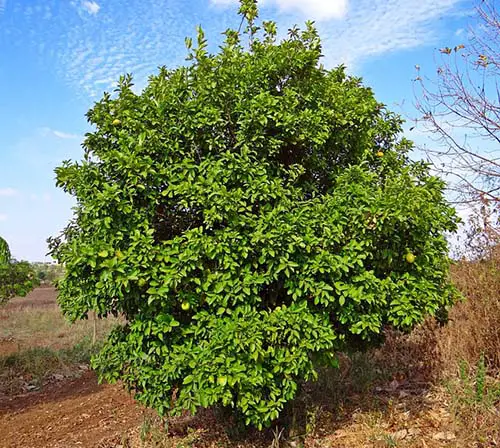
We may receive commissions from purchases made through links in this post, at no additional cost to you.
You plant a lemon tree, looking forward to picking large, juicy lemons later in the season. But, several months pass and…no lemons. Maybe even no blossoms. Or there were lemons growing, but they fell off the tree. What’s going on?
A lemon tree might not bear fruit because of stress due to overwatering, drought, lack of sunlight, poor soil drainage, nutrient deficiencies, extreme temperatures, pests, or diseases. Fruiting can also be affected by the age of the tree, the variety, a lack of pollination, or overbearing the previous year.
Like so many plants (or pets…or people, for that matter), once you provide what a lemon tree needs it will thrive. A few minor adjustments to the care of the tree will make all the difference in whether it is “happy” enough to support fruit growth.
In this article, we’ll troubleshoot some typical lemon tree fruiting issues: Are there blossoms that never turn into fruit? Does the tree blossom at all? Or does fruit partially develop and then fall off? Each of these problems has several potential causes, but the solutions are simple. You’ll be sipping fresh lemonade in no time.
What if the lemon tree blossoms but doesn’t set fruit?
It’s exciting to see the first flush of pinkish-white lemon blossoms in early spring. Lemon trees can produce tons of blooms, far more than will become actual fruit. But what if none of those flowers actually grow into lemons?
Here’s what might be happening (and what to do about it):
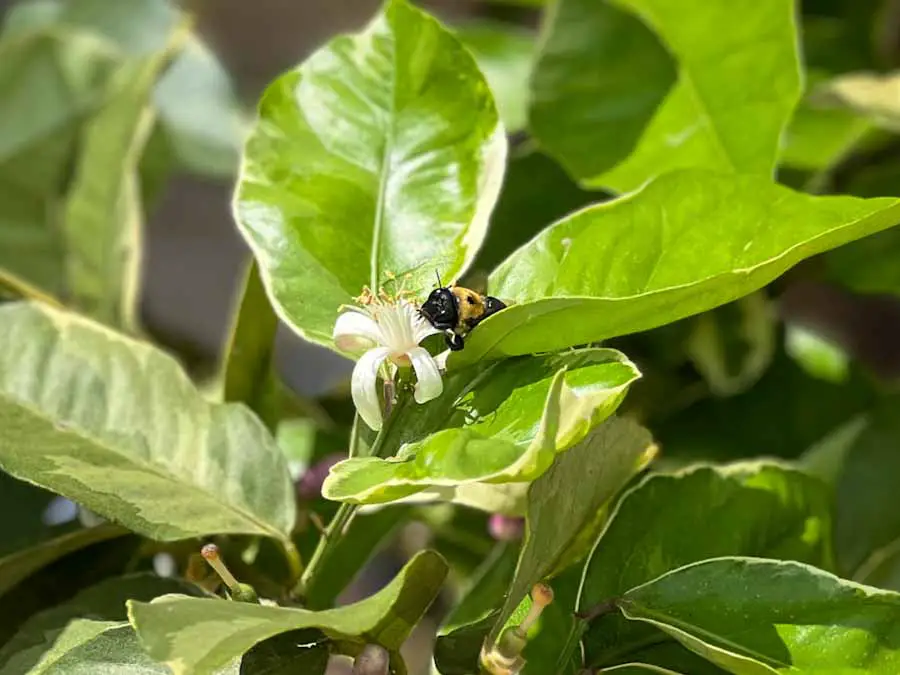
Lack of Pollination
Lemon trees are self-fertile, so they don’t need a second tree for cross-pollination. This is good news if your potted lemon tree is outside where bees – and even the wind – will carry pollen from bloom to bloom. But indoor trees are a different story.
To pollinate a lemon tree that lives indoors, use a cotton swab or a small dry paintbrush. Look for flowers that have visible bright yellow sacs of pollen on the stamens (these are male flowers). Collect some pollen on the brush or swab, then transfer it to a female flower that has a long, bulbous stigma (or pistil), which should be a little sticky. Some flowers have both male and female characteristics, depending on the tree variety.
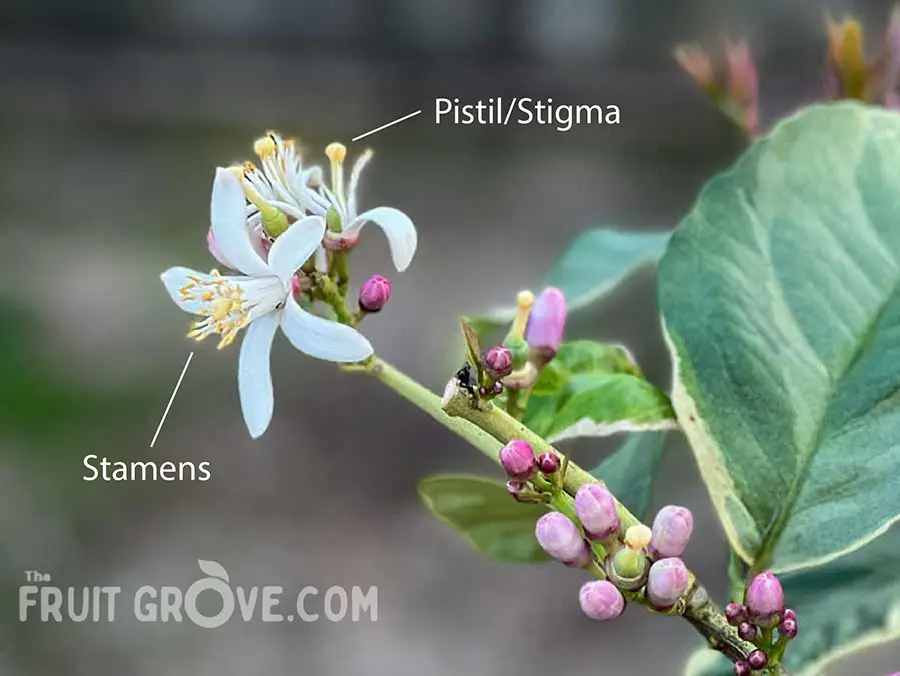
For outdoor lemon trees, always avoid the use of broad-spectrum pesticides. These products will kill off a wide range of insects, regardless of the species. It’s not just the pests that will be harmed, but also pollinators and other beneficial insects. As a result, the use of these pesticides is illegal in many locations.
Too Much or Too Little Water
It’s particularly important not to over- or under-water a lemon tree in the first few weeks after blossoms appear. It takes a good amount of water to set fruit, but overwatering can cause major issues. Small baby lemons can fall prematurely if stressed by too much or too little water.
Trying to figure out if you’ve been watering too much or too little? Learn more here: Is Your Citrus Tree Overwatered or Underwatered?
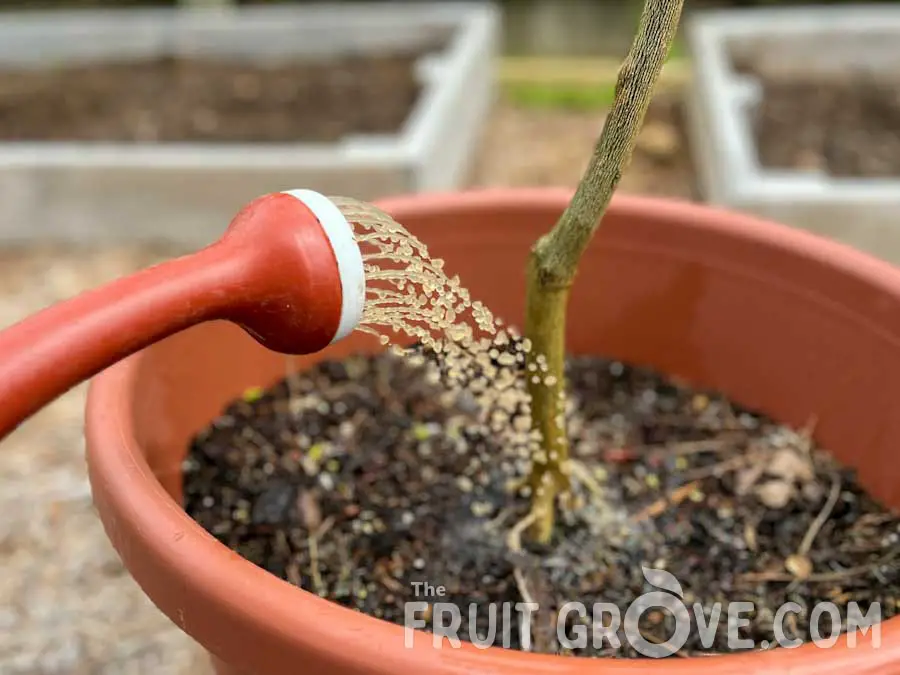
Once the lemons grow a bit larger they can withstand some water stress, although the quality of the fruit may suffer. Overwatered lemons can expand too quickly, causing splitting or rot. Underwatered lemons will be small and less juicy.
Mulch is a great way to regulate moisture in the soil around a potted or in-ground lemon tree. Add a few inches of organic mulch (pine bark, for example) to the top of the pot, leaving a few inches of space around the trunk to prevent rotting. For an in-ground tree, spread mulch 3-4 inches thick about a foot away from the trunk out to the tree’s dripline.
Learn my watering tips and tricks in Watering Lemon Trees: How to Get it Just Right.
Frost Damage
A late frost could be the reason your blossoming lemon tree failed to fruit. A sudden cold snap that hits as the tree is budding or has young flowers could cause the blooms to die or fall off early. Even if some flowers survive the frost, they may be unable to develop into fruit.
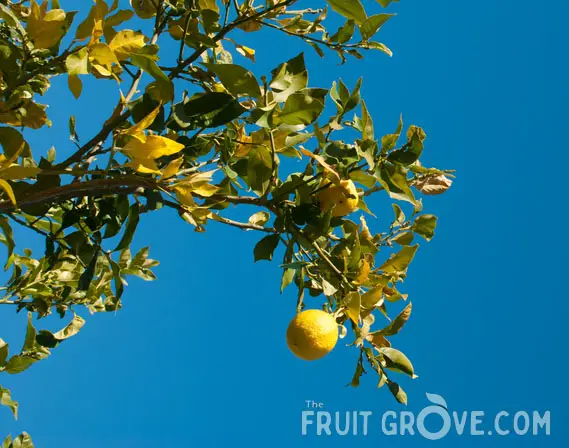
Blossoms that have already been pollinated may be able to withstand colder temperatures. But if you see that frost is in the forecast, go ahead and protect the tree. Bring the pot into a garage or shed, or drape sheets or a frost blanket over the top to protect the delicate blooms. As soon as the temperature rises again, uncover (or bring out) the tree so it can continue where it left off.
Too Young
Most lemon trees need at least 3 years before they are ready to produce fruit (depending on the rootstock). Dwarf lemon trees will fruit the quickest, and they are also the best suited for growing in pots. Meyer lemon trees may only need 2-3 years to fruit, although the fruit on a younger tree may be small.
A young lemon tree could blossom enthusiastically, but it may not be mature enough yet for those blooms to develop into fruit. Give it time, keep the tree happy, and it will start giving you lemons before you know it.
Nothing at All
Most lemon trees produce far more blossoms than will ever turn into actual lemons. My 4-year-old Variegated Pink Lemon tree throws out hundreds of flowers every year, and it’s only about 4 feet tall. The tree could never support as many developing lemons as there are flowers.
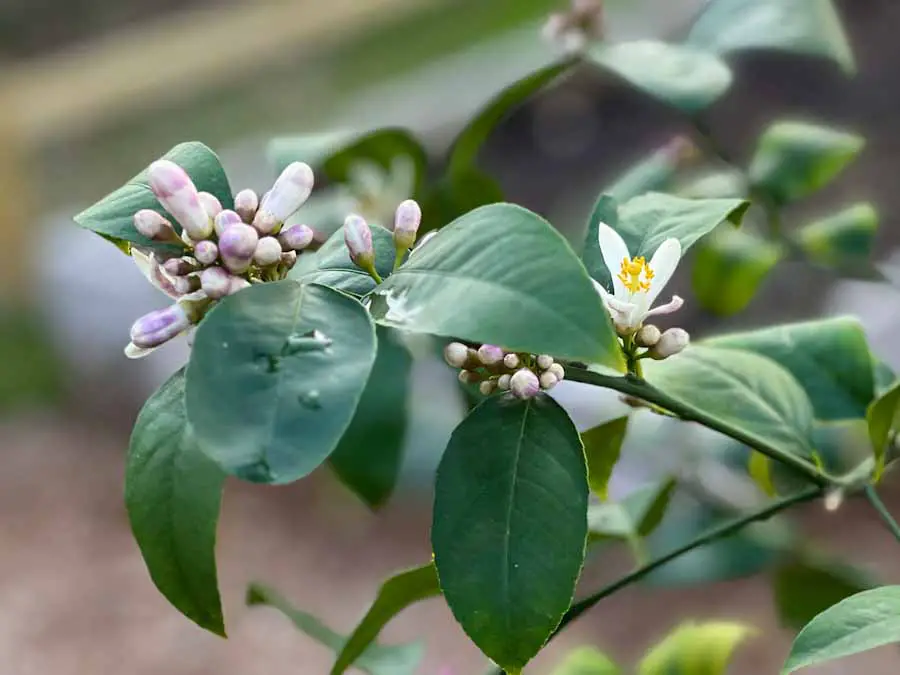
Any lemon tree will naturally drop most of its blossoms. The abundance of flowers attracts pollinators, but as fruit set begins, the tree will only keep the young fruit it has the energy to support. Don’t be alarmed by the volume of flowers that fall off the tree – it’s a natural part of the process.
What if the lemon tree doesn’t bloom at all?
Whether they’re blooming or not, lemon trees are beautiful plants. Many people grow lemon trees ornamentally even if they never fruit. But what if you actually want your lemon tree to be productive? (I know I do!) How do you fix a lemon tree that never blossoms?
Here’s what might be happening (and what to do about it):
Not Enough Sunlight
A lemon tree might have healthy-looking, glossy, dark green foliage, but unless it’s getting tons of sunlight it may never blossom. Lemon trees need at least 6 to 8 hours of direct light in order to flower and develop fruit.
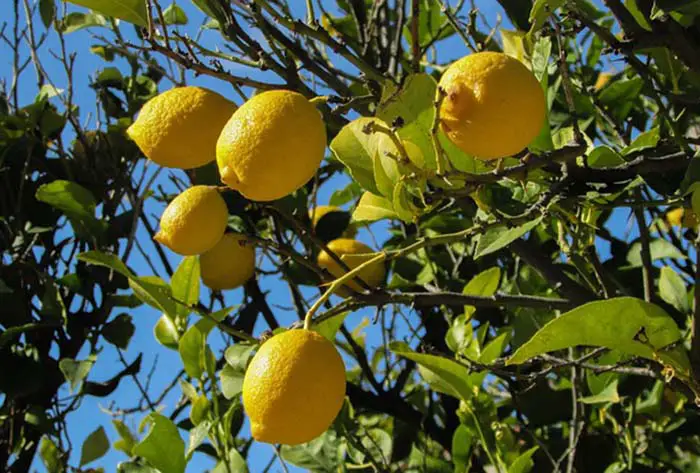
Signs that a lemon tree isn’t getting enough light include pale green leaves, leggy and sparse branches, and a lack of blossoms. The canopy of a lemon tree should be fairly dense in order for the plant to photosynthesize and have enough resources to support fruit production.
If your potted lemon tree spends most of its time indoors, be sure to place it next to a window that gets sun most of the day. Consider moving the tree outside for the late spring and summer to maximize the light it gets. You can place the pot on a large wheeled plant stand like this one to make moving it around easier.
Too Much Fertilizer
Lemon trees are hungry plants, particularly those grown in pots. They need a steady supply of nitrogen-heavy fertilizer throughout the growing season to have what they need to grow and fruit. However, fertilizer can become too much of a good thing.
Vigorous leafy growth with no blooms can be a sign of over-fertilization. Too much nitrogen – especially out of balance with other nutrients – can cause the tree to form excess foliage and no blossoms.
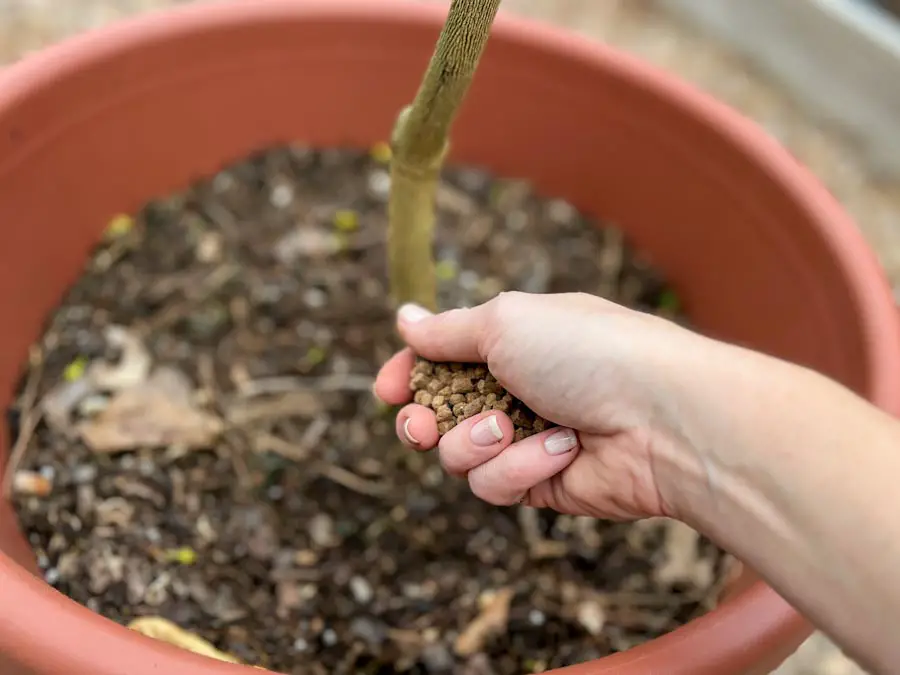
Check out Fertilizing Potted Lemon Trees: Everything You NEED to Know for all the details about how to best feed your lemon trees.
Grown from Seed
You absolutely can grow a lemon tree from a seed collected from one of last year’s lemons…as long as you’re ok with the tree possibly never fruiting. Lemon seeds are usually not genetically the same as the parent plant, and the resulting tree may not blossom or fruit at all.
Most citrus trees are hybrids, and they have to be propagated by grafting to ensure that any offspring will grow the same kind of fruit as the parent. Lemon trees grown from seed may be drastically different from the parent plant. The genes in the seeds are not the same, so the resulting fruit (if any) will also be different – and usually inferior.
The other problem is that lemon trees grown from seed, even if genetically ideal, will take 8-10 years to be ready to blossom and set fruit.
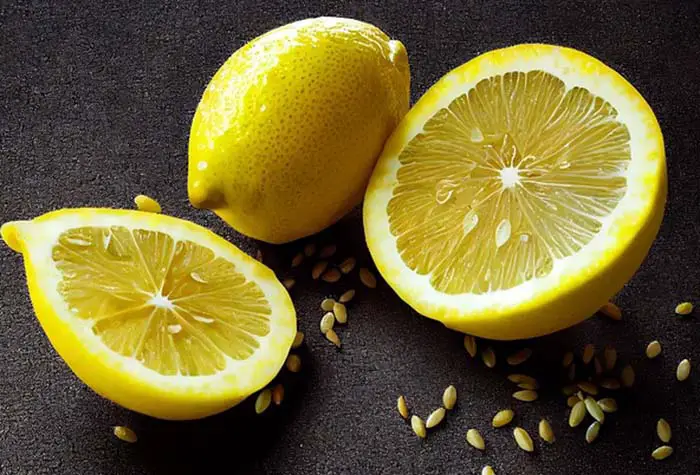
If you just want a nice, ornamental, good-smelling leafy tree, by all means, try growing one from seed. But if growing high-quality lemons is your goal, it’s best to purchase a grafted tree, which will fruit much more quickly (see the next section).
Too Young or Newly Planted
No matter what kind of lemon tree you have, it will most likely take at least 2 or 3 years before it’s ready to blossom. If your tree is very young, it just may not be old enough yet to flower and set fruit.
If you’ve just planted a lemon tree in a pot or in the ground, it will need some time to get established. If your lemon tree isn’t blossoming yet, it may be putting its energy into growing a healthy root system – which will lead to better lemon crops in the future.
Time of Year
Like other fruit trees, lemon trees bloom at specific times of the year. However, it depends somewhat on which variety you are growing. If your lemon tree is lacking blossoms, it may simply be that it’s not yet the fruiting season for that variety.
For example, ‘Eureka’ lemons bloom primarily from the early spring to midsummer. ‘Improved Meyer’ blooms off and on throughout the year, but it flowers more vigorously in the fall and early spring.
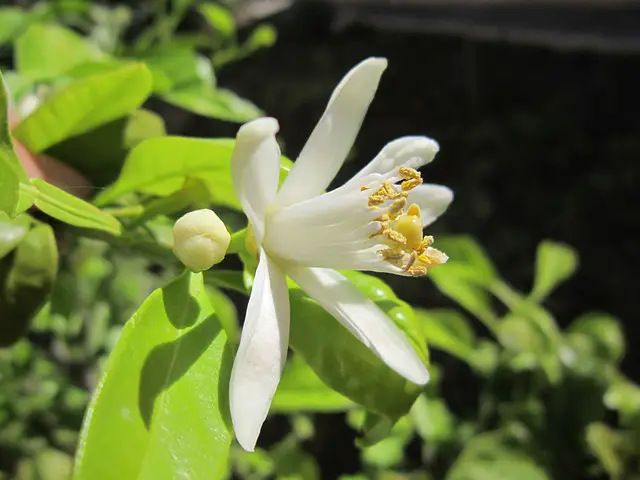
It may seem strange to see blossoms and baby lemons forming on ‘Improved Meyer’ in January, but that’s typical for this plant. Other varieties may have longer stretches of time with no blossoms.
Poor Drainage
Whether a lemon tree is planted in a pot or in the ground, poor drainage can cause major problems. A lack of drainage first causes root stress and keeps the tree from absorbing nutrients. Waterlogged soil quickly leads to root rot, which can be fatal to the tree.
Stress due to the inability to absorb nutrients or root rot will definitely keep a lemon tree from blooming. If you see yellowing leaves, or if you notice that the soil stays soggy, you may have a drainage issue. Replace the soil with new, well-draining and aerated potting mix, and adjust your watering schedule to avoid overdoing it.
Read more about what goes into a great lemon tree potting mix here: The Best DIY Citrus Potting Mix Recipe (Plus 5 Brands to Try).
What if the lemon tree develops fruit but drops it early?
You may notice that your lemon tree did indeed flower, and even started growing young lemons…but then they all fell off the tree. What’s going on?
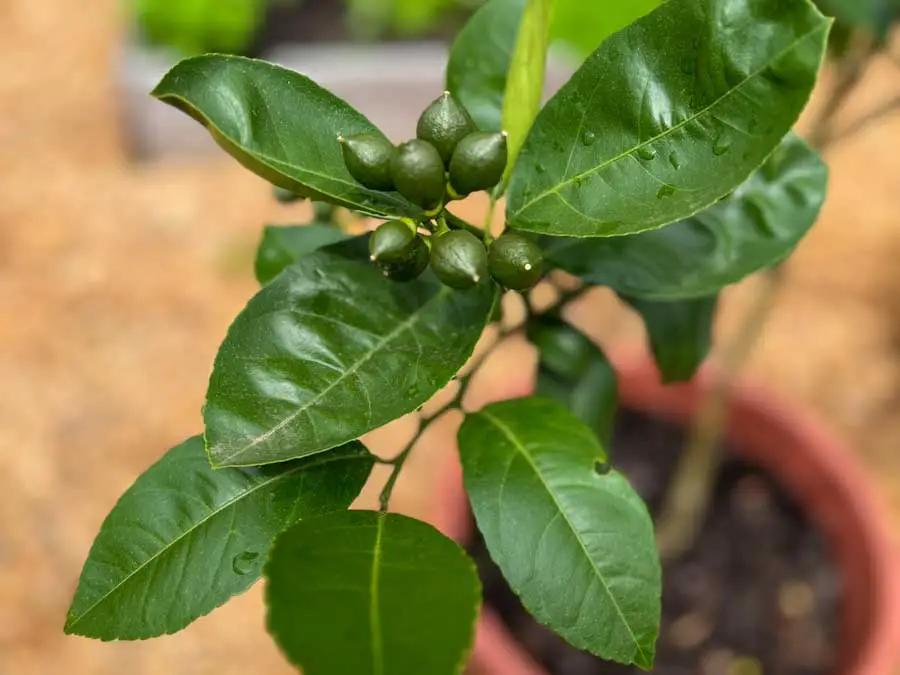
Here’s what might be happening (and what to do about it):
Lack of Nutrients
This is a big one. As I mentioned above, lemon trees need a lot of feeding to fruit their best. If they don’t have access to the minerals they need – either because they aren’t available in the soil, the pH is wrong, the soil is waterlogged, or some other issue – then the first thing to go is the young fruit.
It’s essential to fertilize potted lemon trees regularly to support fruit production. I explain exactly how and when to do this and suggest some fertilizers to try in my article, Fertilizing Potted Lemon Trees: Everything You NEED to Know.
Citrus trees will always drop a large number of blossoms and baby fruits, since the tree only has the resources to support a certain fruit load. This type of fruit drop is completely natural and necessary. If the lemon tree loses many small lemons, but keeps some, then be reassured that the tree is just doing what it needs to do.
Pests or Diseases
Lemon trees can be plagued by aphids, whiteflies, scale insects, or other pests. These infestations are rarely fatal to the tree, but they can stress the plant and lead to premature fruit drop or stunted growth.
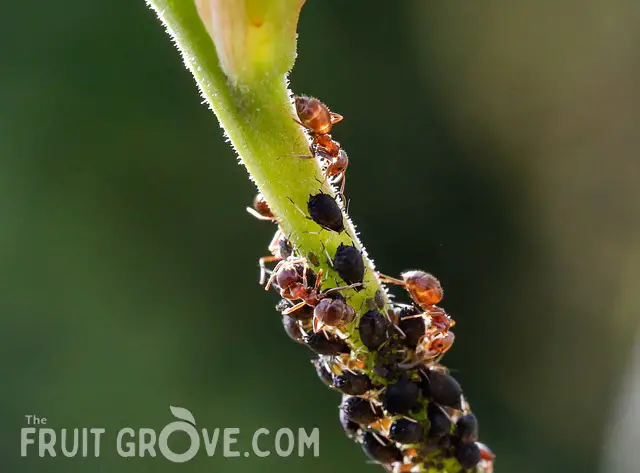
Similarly, various citrus diseases can cause a lemon tree to drop its fruit. In most cases, the best guard against these pests and diseases is good overall care – regular watering, fertilizing, adequate light, and well-draining soil.
Fruit drop won’t be your first clue that the tree is being plagued by insects or disease. You may also notice the leaves curling, discoloring, or overall stunted growth.
Here are a couple of Fruit Grove articles that can help you troubleshoot some of these problems: Yellowing Lemon Tree Leaves? Here’s 5 Reasons Why and Lemon Tree Leaves Curling? Here’s What to Do About It.
Check out this site for more details about how to identify pest or disease damage in citrus trees.
Extreme Temperatures
In general, fruit drop is a symptom of stress. One of the most common sources of stress for lemon trees is extreme heat or cold. A sudden drastic temperature change may shock the tree into dropping lemons before they are fully developed.
In winter, the lemons on a tree will be more mature and can withstand some temperature stress. As I mentioned above, if you see that a sudden extreme cold snap is forecast, take measures to protect the tree.
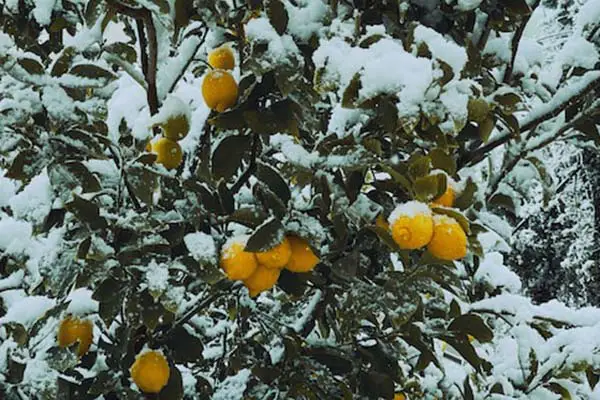
In the summer, lemon trees will actually slow their growth if the temperatures get too high – around 100°F (38°C). If the intense heat continues for too long, the tree may drop its fruit prematurely. Extreme heat will also lead to drought stress, which can cause fruit drop as well.
If you live in a climate with extreme summer temperatures, as I do, place your potted lemon tree in a location that gets some late afternoon shade to avoid heat-stressing the tree. In the hottest part of summer, I often have to water my potted citrus trees twice a day to keep them happy. Lemons need a lot of moisture to develop properly, so keep the tree watered to avoid fruit drop.
What if the lemon tree bore fruit previously but didn’t this year?
It can be so frustrating when a plant that has thrived previously suddenly starts to struggle. Maybe you did get a great crop of lemons last year, but this season the tree is bare.
Here’s what might be happening (and what to do about it):
Needs Time to Establish
A grafted lemon tree purchased from a nursery may already have blossoms or fruit on it. But once you transplant it to a bigger pot (or the ground), expect it to take some time for the tree to settle into its new spot.
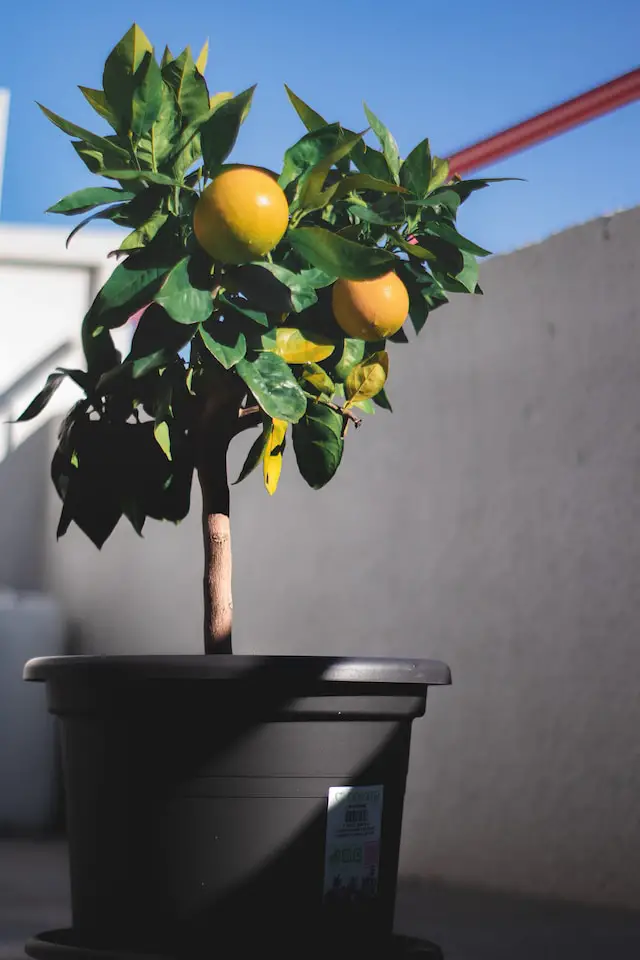
If your tree bore lemons when it was still in the pot, but stopped fruiting after it was planted, it may just need more time to establish. Newly planted trees need to put their energy toward developing a strong root system, not producing fruit.
Alternate Bearing
Some lemon trees can bear a heavy crop one year, then a lighter one the next – this is known as a biennial crop, or alternate bearing. This may happen when the mature lemons are left on the tree for too long, inhibiting the ability for new blossoms to form. Stress due to drought, weather, or nutrient deficiency can also influence the crop load.
One thing you can do to prevent alternate bearing is to lightly prune every late winter/early spring. Removing damaged growth, leggy branches, and thinning out overly dense areas will encourage the tree to produce blossoms and new growth.
Learn more: A Guide to Pruning Potted Lemon and Lime Trees
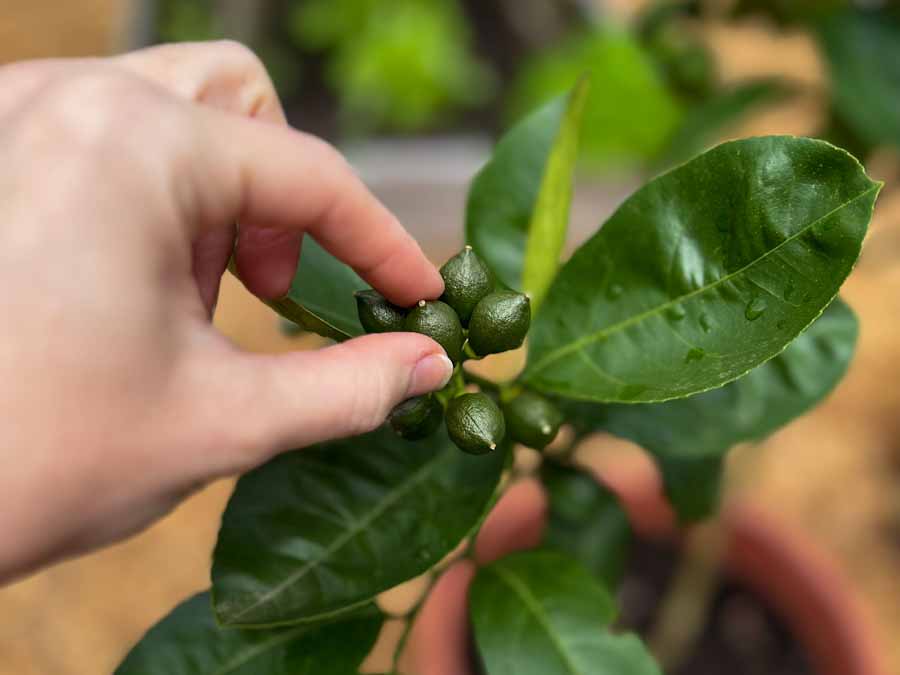
If you notice that the tree has an unusually large number of young lemons on it, you may want to thin them out by hand. Gently pinch off some baby lemons so that each cluster of fruit has no more than one or two, and so the lemons are spread out on the tree. Lightening the crop slightly this year will help the tree produce more lemons the following year.
Cold Damage
As we’ve talked about, sudden cold temperatures can damage blossoms and young and cause them to fall. In extreme cases, cold can cause partial dieback of the tree. A bad case of freeze damage can decimate one year’s lemon crop, but the tree may flower more prolifically than ever the following year after it has recovered.

